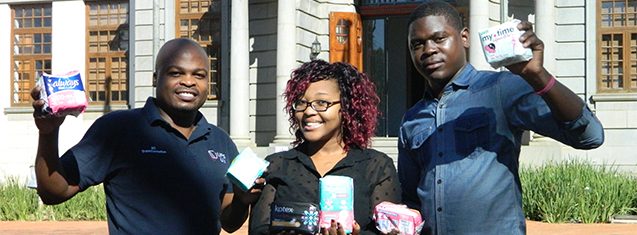
A Kovsie student initiative is currently crying out to the community at large to help in realising a dream of helping school learners who come from poor families to gain confidence in their school work and social lives generally.
This initiative by Nkanyezi Talk @UFS aims to do this through the provision of sanitary towels to such learners at the onset of puberty.
“Through research, we have established that some learners face numerous challenges during this stage, with some using socks as a substitute for sanitary towels while others opt for newspapers. This raises a lot of health and psychological concerns,” says project coordinator Bongani Zwane.
According to research conducted by UNICEF in 2013, one in ten girls who cannot afford sanitary towels will miss a week of schooling during the cycle of their period. This is because they fear being ridiculed by other learners, and because their dignity as girls is not being respected. This absence from school also happens because they do not understand what is happening to their bodies.
“What should be a celebration of womanhood becomes a time of shame and embarrassment with dire consequences for the girls’ education as well as their future,” Zwane adds.
“We therefore appeal to everyone to help us realise this dream of making sure that we reduce the number of schoolgirls who do not attend school during their menstruation periods, and restore their dignity by donating sanitary towels.
“Overall, we have already collected more than 1000 packs of sanitary towels. The office of Cornelia Faasen, our acting dean of Student Affairs, has also endorsed the campaign and already donated 600 packs of sanitary towels,” says Zwane.
“We have set ourselves the goal of collecting and donating 10 000 (ten thousand) sanitary towels in total.”
Methods of Donating
Nkanyezi Talk @UFS welcomes any physical donations of sanitary towels and financial donations through their UFS entity number 1/466/08119 only.
For more information on how and where to donate, please contact project coordinator Bongani Zwane at 079 237 5089 or email him to bzwane@workmail.co.za.